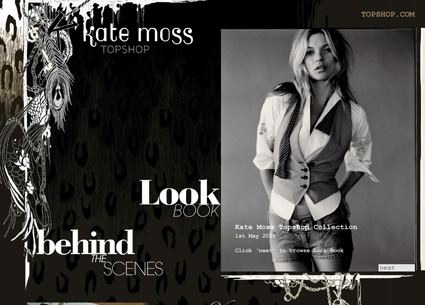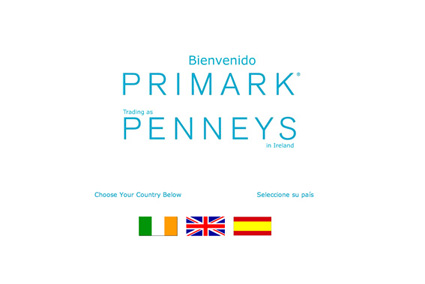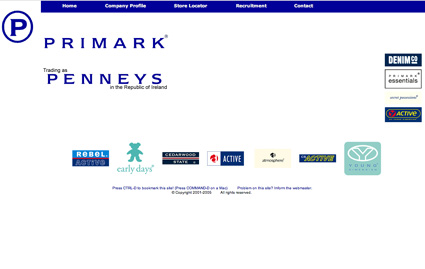http://www.apple.com/hotnews/openiphoneletter/ couldn’t he just have given them all $100 credit? And why will you only be able to redeem your credit against a purchase at an Apple Store? What a swizz. Seth says he steps up to the plate, no chance.
Archive for the 'Business' Category
Webtogs, is a new etail business, selling “the outdoors, online”. At the moment they’re due to open (according to their holding page) in Summer 07 and have taken the interesting step of documenting their progress towards their launch. I haven’t read all of their blog but what I’ve read makes interesting reading and is a good way of garnering interest pre-launch. Maybe we can expect to see more of this type of prelaunch writing to get us emotionally attached to a brand before it goes live, particularlywith the bigger brands. Some e.g. Topshop and New look have done it with Kate Moss and Lily Allen respectively but this seems very much the domain of fashion orientated businesses rather than businesses generally.
I think they’re missing the boat without an email sign up on their holding page and their logo’s lousy but that apart there’s a few good tips on the design and planning process. It’ll be interesting to see if they make the transition from internet people to retailers. If/when they do become retailers they’ll no doubt understand that when they say …
“The basic rule of successful ecommerce for us, is this: “If someone wants to buy a backpack, sell them a backpack, don’t try to sell them a tent”.
… is of course hopelessly wrong. Cross merchandising, upselling, increasing basket spend are all absolute requirements of succesful retailers, online or otherwise.
The buzz continues to roll for Topshop and the Kate Moss collection. Of course it will sell out practically straightaway perhaps even make the obligatory appearance on ebay. At the end of the day they’ve made it happen for which they must get a gret deal of credit.
Originaly there was much gossip about wether Kate Moss had precipitated the resignation of Jane Shepherdson, former head honcho at Topshop. This really signalled the start of a (viral?) PR and marketing campaign that will culminate on the 1st May with the launch of the Kate Moss collection. Yesterday’s Topshop stylenotes email included a link to a new Kate Moss Topshop website, a one page site along the lines of a Myspace page to whet our appetites.

Topshop it seems are getting it right online. Not only this quick preview type of website but also their ’style notes’ retain the interest every week, an RSS feed of their top 10 ‘Daily fix’, a Style Blog with competitions a video podcast site and more. There’s been much talk of retailers embracing web 2.0 and what it means to them (I know … let’s have a forum) with even a 16 page pullout in Retail Week. But, Topshop it seems are ahead of the game, especially since two thirds of UK fashion retailers don’t have a transactional website yet. I know it’s only April but are they going to miss out on online sales at Christmas again?
As the antithesis of Topshop’s multi stranded online marketing model Primark launches a new store in Oxford Street this week. Their website doesn’t exactly celebrate this, no doubt it’s in construction but it does let down what is otherwise a good value fashion retailer.


Recently we attended a new business meeting with a prospective client. Previously we’d sent them some of our marketing blurb material and had been rebuffed. however since then we’d had a phone call to arrange a meeting, so off we went.
This is a business that works in fashion retail and considering they’d invited us we assumed that the answer to the question at the top of this post was a given, i.e. of course design can make a difference, and rather a big one at that. The Design Council has even got a whole website dedicated to the difference design can make, even going as far as to say “Every £100 a design alert business spends on design increases turnover by £225.” That’s a huge fact, multiply that investment by a few thousand or hundred thousand pounds and it’s pretty good odds that some of that turnover will be profit, if it’s done right of course, and of course there’s the Design Effectiveness Awards. So, when in our meeting, we came across the question of design actually making a difference how did we answer? Well, not very well actually. We’d made an assumption that an invitation to meet meant this prospective client had an understanding of retail design (since that’s what we do) which rapidly became apparent that this wasn’t the case, even though his business is a reasonably succesful fashion retailer with a chain of 40 shops nationwide and a very succesful standalone e-tail business. We’d done our research, visited a few of his stores, spent quite a few hours going through his websites, even shopped on one of them, but what were totally unprepared for was the scepticism that we encountered about our industry and retail design in particular.
So although we know the answer to our initial question, can design make a difference?, perhaps the real question should be how do we educate someone who is so cynical about what we do? Do we go into a meeting armed with Design Council facts and figures? I suspect that’s not immediately going to win someone over, especially at a senior level. His reasoning was that they were doing pretty well thank you, why should we ‘add some design in’ or some ‘nice graphics’ as that sounds a bit risky.
Of course the answer is his business already uses design, the problem is it uses it very badly so his experience of using design is not a good one. It already pays money for bad design, and bad marketing material which is inconsistent and amateur. This in turn makes them look cheap and unauthentic, (as opposed to a true value proposition) and doesn’t make the difference to his bottom line that good design would. I suspect the cost of his bad design is roughly similar to the cost of good design but the true cost of the bad design might be his turnover is less than it should be, he alienates some customers because they don’t want to shop in his stores or when they are in them can’t find what they want, see the product well enough or find a way to purchase it. The longer term cost might be that soon his stores will look tired and dated, in fact some of them already do, and newer, fresher more vibrant and entreprenurial businesses in the same retail field will come along and take his ground, or even established retailers looking for a move into a growth market will take his profit margin and he won’t be able to compete because he won’t have a strategic vision that includes a joined up retail design strategy because he underestimates its importance.
All retailers know they constantly need to look over their shoulders as well as being able to reinvent, renew and constantly evolve which is why a good relationship with a design company that understands a business can be worth its weight in gold; quite literally.
Having got over our initial disappointment with ILVA at Gateshead, we have had quite a few discussions (and heated debates!) about them and started to talk about what they could do to improve their store. This has become a wider discussion about retail design in general and how retailers can make more effort and add more excitement for their customers. So here’s our first top 10 (oops 9) list with particular reference to ILVA since it’s up their in our minds at the moment.
1. The entrance – visual expression of the brand.
The shop front is about making a brand statement, today I do not believe a retailer can rely on a building, customers expect to connect with a brand to understand what they are buying into a visually:
The shop front should feature: Ilva’s aspiration of elegance (the identity designed by Noddy probably doesn’t help them here). Plus a lot more – this might include, the latest product, seasonal product, product range, product promotions. Also why do all retailers copy each other and all use the same or similar retail calendars? Why not take a leaf out of Selfridges book and create your own excitement.
I think the shop front is elegant the entrance in particular but for a retailer it is lacking in inspiration, with no product statement. From a customers perspective it is not enough of an architectural statement to create interest and not enough of a brand statement to create expectation. I am not sure if Schmidt, Hammer and Lessen had any involvement in the build but if so they are clearly not retailers designers, to create a truly great retail experience you need to understand retail and I believe to create a truly great iconic retail building you need both a great architect and a retail designer.
On approach it would be simple to see a product statement if ILVA used a Visual Merchandiser. Or alternatively started their graphic navigation from the shopfront.
2. The decompression zone – the first 3 metres of the store. Provide a product cat-walk and visual navigation of the space, give us time to move from the outside to the inside.
As the customer enters the store there is an opportunity to explain the attributes of the brand, this should be an exciting visual expression of the product. Also the customer should be able to orientate themselves enabling them to understand the store, making a decision on where to go. In the ILVA store in Gateshead I would suggest the ground floor double height space is used to showcase a much larger range of product, from here the customer should be able to walk directly into the retail space, this will mean removing the glass shelvingthat blocks your passage through to the ground floor.
Any customer should be able to visually navigate the space from here, without having to ask the ‘receptionist’ where to go, understanding the proposition and being visually enticed.
3. The store – Re-organise the product into visual stories, clear and interesting planning. Visual merchandising and cross selling.
Re organising all the product into visual stories (Oriental, French, Scandinavian, modern etc.) means customers can take their cues from these stories and buy into them relative to their own lives and homes. Re-plan the floor into the stories, this will allow one room set to flow into the next each room set must be a fully and authentically visual story with accessories, wall finishes, and different art not just a few items of furniture against a white backdrop or the constant doubling up of (not very nice IMHO) art. The accessories could even be available to purchase adjacent to the room set, a simple way to help customers start to buy a look who can’t afford or don’t want to buy the furniture today.
The dining areas should not be just a sea of tables but interesting environments, customers can feel invited to sit in and imagine in their own home. Beautiful elegant graphics should explain the attributes of the product, its cost, its delivery and any credit offers to help give all information at the appropriate point and help turn browsing into a purchase.
There needs to be a absolutely clear good, better, best policy allowing customers to buy ILVA value at each price level. This should go into the bath shop and accessories where the product was not as good as the brand leads you to expect, the towels were poor quality, not in trend colours, the cushions were under filled etc. These areas could be fabulous if ILVA lived up to its values.
This store could be re-planned so easily and the VM solutions are so simple and can be so effective. A plan that leads the customer from one understandable look to another enticing them on and never disappointing should be simple to achieve with this brand and create a real wow factor. The store needs navigation to help customers understand the space; it needs graphics to explain the product and its value. It needs graphics to inform costs and explain delivery. It needs graphics to explain offers. You need to be able to pick up a catalogue without delving under an unmanned pay station to get one. It already has all the answers on its website, just take a look at their catalog (sic), unfortunately this flavour hasn’t found its way into the store, in Gateshead at least.
4. The staff - They need to be product experts with enthusiasm. Preferably looking like they might have some experience themselves in buying furniture. Staff training is a worldwide dilemma but it can be so, so much better.
5. Accessories – A more extensive, more interesting range.
The accessories areas should be department allowing customers to buy into the look/trend customers feel is for them, even if they are not ready to buy furniture yet, this area should entice customers to return regularly for gifts and to see the latest looks. This is an opportunity to be ground breaking in introducing trends colours and eco products, all areas the UK customer would love to see. Don’t hide trolleys behind a wall where you’re unlikely to find one. Put them in a place where you might have more than two things in your hand.
6. The café – More relaxing, easier to understand the menu, better opportunity to buy Danish produce.
The long rows of tables looks very ‘modern’ and probably looks great on an architectural visual, but did not invite customers in, some visual breaks would help it feel less like school dinners. The counters were one of the best parts of the store, the offer was rather difficult to understand and staff hungry, although despite there being quite a few hanging around getting served wasn’t that easy, and there was only three of us in the café.
7. The exit – Open all the doors to enter and exits.
The only reason to separate the exit from the entrance in UK retailing is to stop customers stealing product! This does not sit well with the ILVA brand. Ikea use a separate exit because of all the larger product collected by the customer, it is not fun but the fact the product is available immediately makes us put up with it. ILVA should be better than this, customers should be able to navigate their way to the collection point from the tills, they should also be able to leave and enter through any door.
What ever the operational issues are with the entrance/exit regime ILVA have at present they quickly need to get over them and open up the store.
8. Make visiting ILVA a day out, somewhere customers can visit even if they have nothing they need, it could be so great and could be with a bit more effort.
9. Buy, read and learn - Why We Buy - The Science of Shopping by Paco Underhill